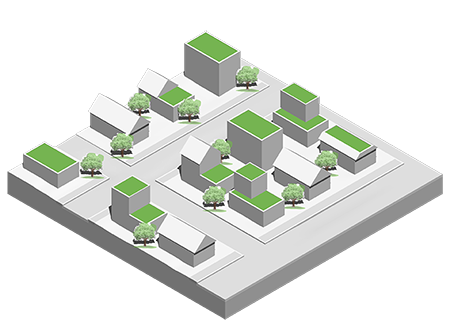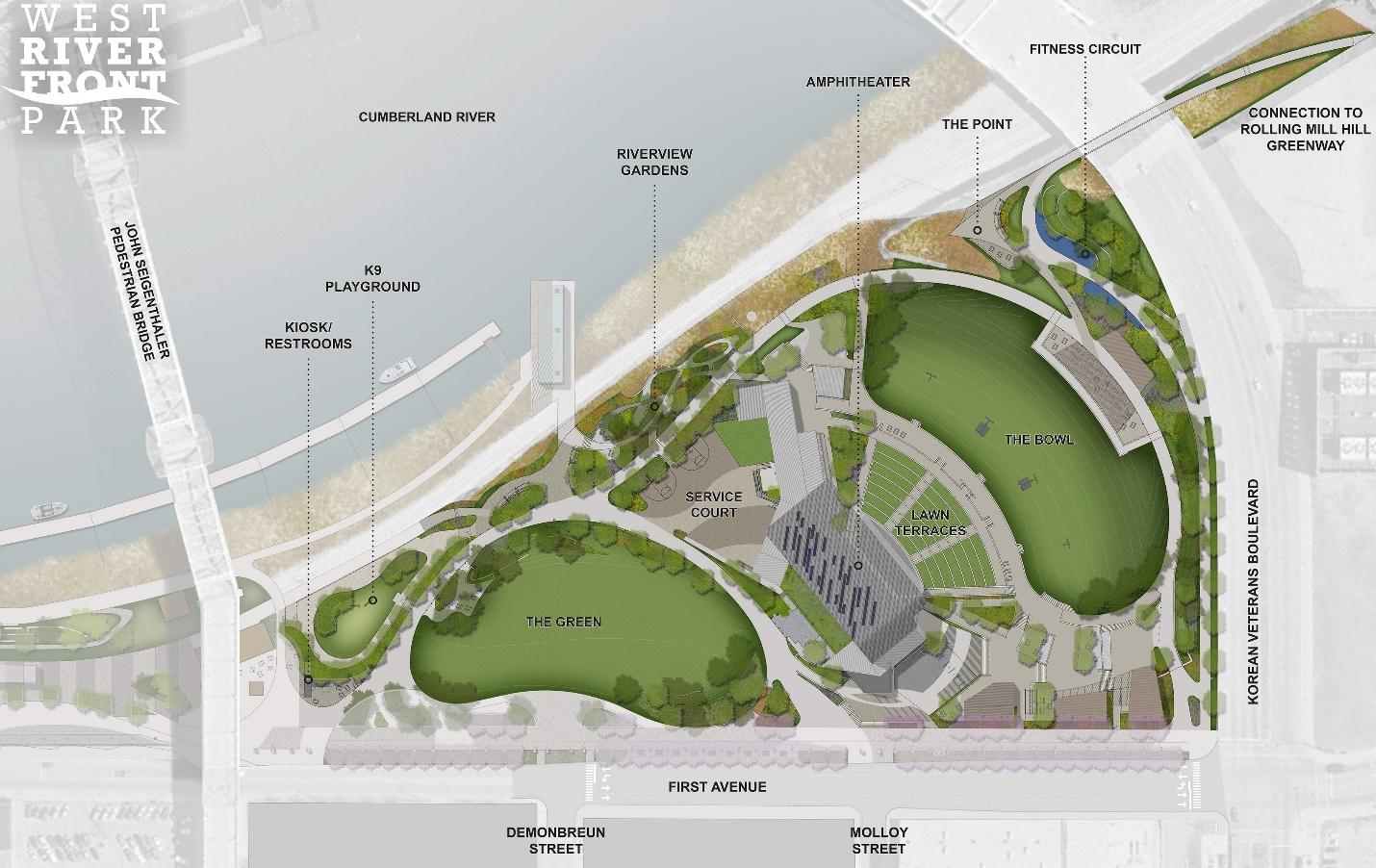Green Roofs
A green roof is a contained vegetated space that is built on top of a structure. They typically include a waterproof membrane, drainage and filtering layers, growing media (soil), irrigation, and plant materials. Green roofs may be installed strictly for stormwater management and energy savings, or they may be an amenity in the form of rooftop gardens, educational space, or urban food production. Large commercial or public buildings are more likely to have high-intensity (and higher-cost) green roofs that can support nearly any type of plant material, while smaller buildings or residences are more likely to have simpler, low-maintenance types of green roofs.
Hazard Mitigation
Green roofs use vegetated areas to absorb and store rainfall, reducing stormwater runoff from the roofs of individual buildings.
Siting Considerations
Green roofs may be incorporated into any type of building (residential, commercial, or industrial), but must be appropriately planted according to the hardiness zone and exposure of a particular location. Appropriate underlying roof structures have a slope of no more than 25 percent.
Structural considerations are vital to constructing a green roof as they can add a tremendous load. This is especially important when retrofitting an existing building. Both the dead load (the roof itself, plant materials, snow, and retained water) and live load (people) must be determined. If the load capacity of an existing structure cannot accommodate the increased weight, supplemental reinforcement measures may be added in consultation with a structural engineer. Existing and new roofs must be able to withstand the full load of the green roof prior to installation as variation of a roof’s original design weight can lead to structural failure
Wind stabilization measures may be necessary to reduce the loss of planting medium (soil) in areas with high winds and/or wind turbulence.
Professional structural design and engineering is vital to prevent structural failure, leaks, and other potential failures.

Costs
Up-front costs for green roofs may be considerable, estimated to average $10-$25 per square foot, and ongoing maintenance is required. Retrofits where reinforcement measures are necessary to increase the structural capacity of a roof may be cost prohibitive.
However, studies have estimated the return on investment from green roofs (through energy savings) to be anywhere from zero to 20 years. Many jurisdictions have incentives and initiatives to allow, encourage, or even require green roofs. These include construction cost rebates (Milwaukee, Nashville, Washington, DC), floor area ratio bonuses (Portland, OR), tax credits/abatements (New York, Philadelphia), and discounted utility fees (Minneapolis).
Installing green roofs on existing buildings which cannot accommodate the full load of the green roof can be cost prohibitive due to the structural enhancements required.
Co-Benefits of the Strategy
For individual buildings, green roofs provide significant energy savings due to their cooling, shading, and insulating properties. Other cost savings are achieved by extending the useful life of the roof beyond that of a conventional roof.
Where green roofs are made accessible to people, there are also social co-benefits achieved by providing recreational green space and connecting people to nature. This can lead to associated economic co-benefits for building owners/tenants through increased employee productivity and reduced absenteeism.
Green roofs also reduce the urban heat island effect which in turn has several benefits such as reducing localized urban warming, air pollution, heat-related illnesses and mortality. The planting scheme of the green roof also aids in improving microclimate and air quality of the building surroundings.

Maintenance Considerations
The life expectancy of a waterproof membrane under a green roof is 40 years (compared to 17 years for a conventional roof); however, green roofs require regular inspection and maintenance to ensure they remain alive and functional.
Upon installation, plantings must be checked frequently to ensure they are thriving. Once they are established, quarterly inspections may suffice. Invasive species (especially woody plants that could puncture the waterproof membrane) must be removed.
Similar or Complementary Solutions
Green roofs have overflow structures (such as drains and downspouts) that connect to a site’s larger stormwater management system to handle large rain events. At the site level, the overflow could be directed into a bioswale or other natural infrastructure solution.
Additional Information
http://www.lid-stormwater.net/greenroofs_home.htm

